Muwekma youth campout at 'Ootchamin 'Ooyakma

On July 28-29, 2024, multiple families from the Muwekma Ohlone Tribe of the San Francisco Bay Area, among them fifteen youth members, came to Jasper Ridge Biological Preserve ('Ootchamin 'Ooyakma) for a campout. The youth, ages ranging 3 to 14, were accompanied by twelve adult members. Fourteen Stanford affiliates, including students, faculty, and staff, also participated in the campout, making it a truly collaborative event between the tribe and the university.
We share here the variety of activities that we had at this two-day event. For the origin of the event and its significance to the tribe and to the Stanford community, please read the accompanying post.
Day 1
The first day of the two-day campout began with the Tribal Chairwoman Charlene Njimeh’s opening remarks to welcome participants. To celebrate this collaboration with the tribe, JRBP('O'O) staff then handed out to each participant a T-shirt that had a campout graphic designed by tribal youth member Tristan Nijmeh, and we took a group photo with everyone wearing it.
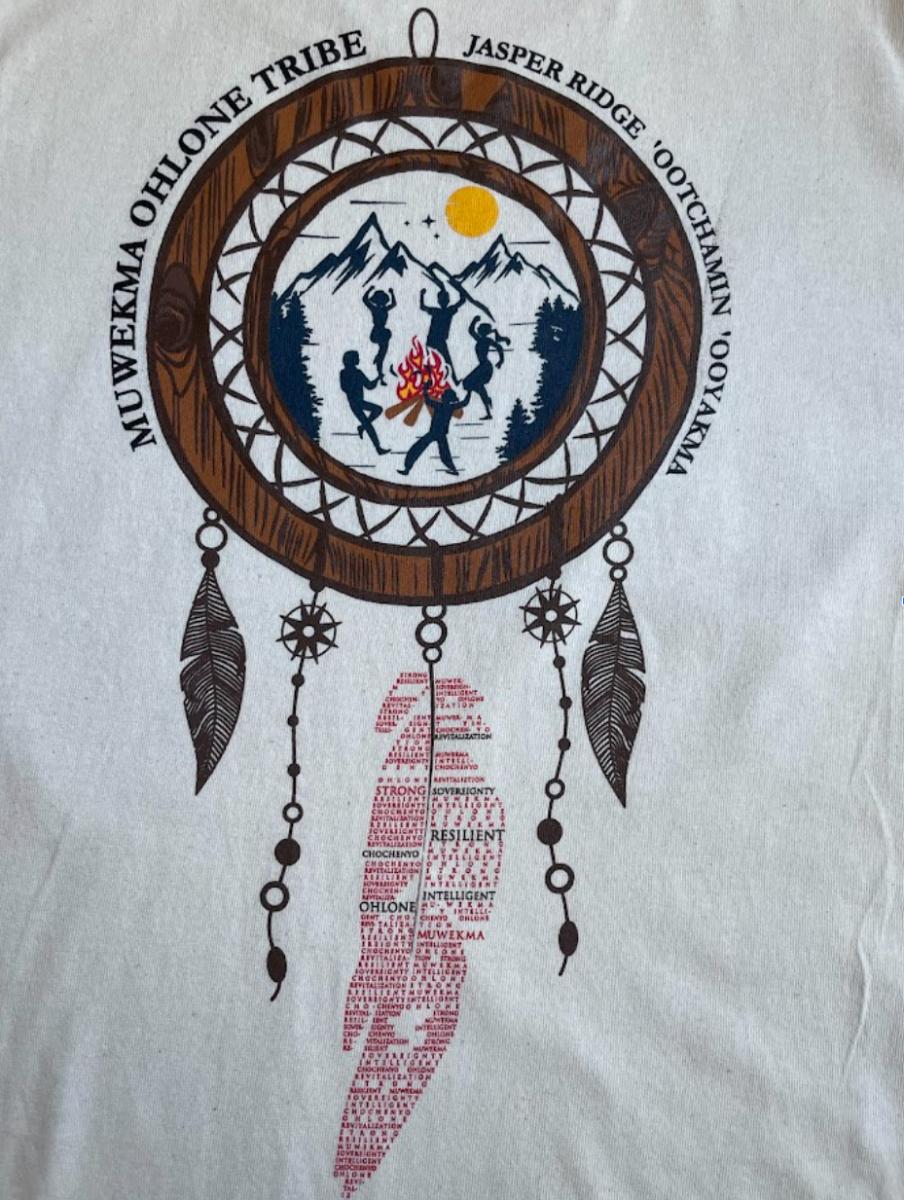
Campout T-shirt graphic designed by Tristan Nijmeh. Photo by Tad Fukami.
As part of knowledge sharing activities, the youth learned the techniques and materials used for wildlife monitoring at JRBP('O'O). A few weeks before the campout, some of the youth members had come to the preserve. They worked with Academic Technology Specialist Trevor Hebert to choose several sites where they thought they would capture wildlife. They then deployed the cameras, with the intention of downloading the images and analyzing the photographs during the campout.
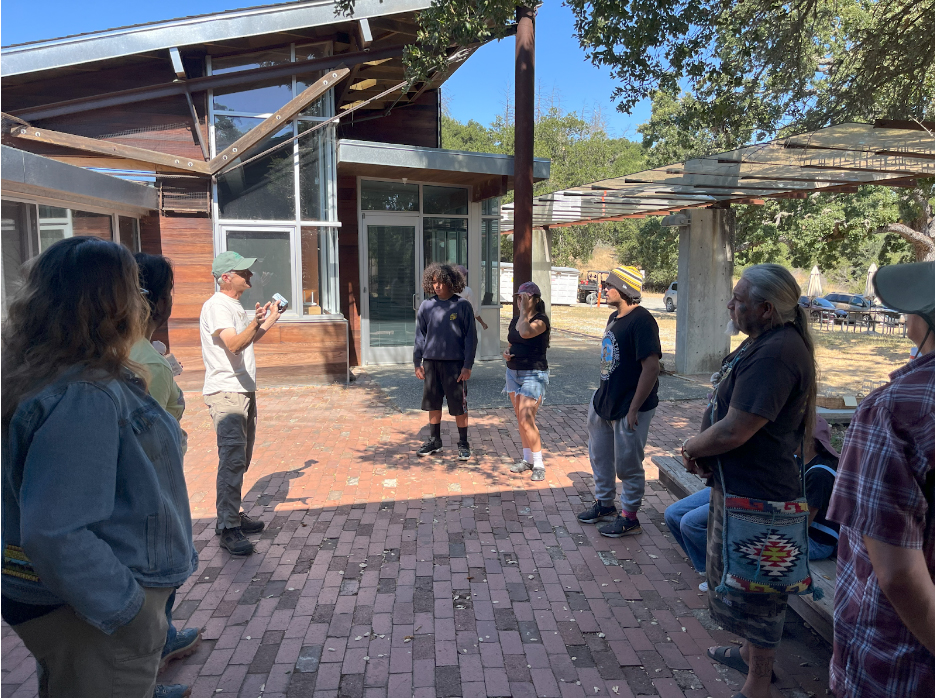
Trevor Hebert introduced wildlife camera technology to Muwekma youth members before going out to set up camera traps with them on July 10, a few weeks before the campout. Photo by Jorge Ramos.
Soon after they arrived at the campout, the youth retrieved memory sticks from the new cameras. They then presented the downloaded images and videos to everyone. Everyone was impressed with the breadth of animals recorded over the two-week span, including máyyan or coyotes (Canis latrans), yáawi or skunks (Mephitis mephitis), čéeyiš or jackrabbits (Lepus californicus), ṯoot or mule deer (Odocoileus hemionus), ’éx or squirrels (Sciurus griseus), bobcats (Lynx rufus), raccoons (Procyon lotor), opossums (Didelphis virginiana), woodrats (Neotoma fuscipes), wild turkeys (Meleagris gallopavo), blue herons (Ardea herodias), and even mountain lions (Puma concolor), including a footage of a mother and her two cubs walking together.
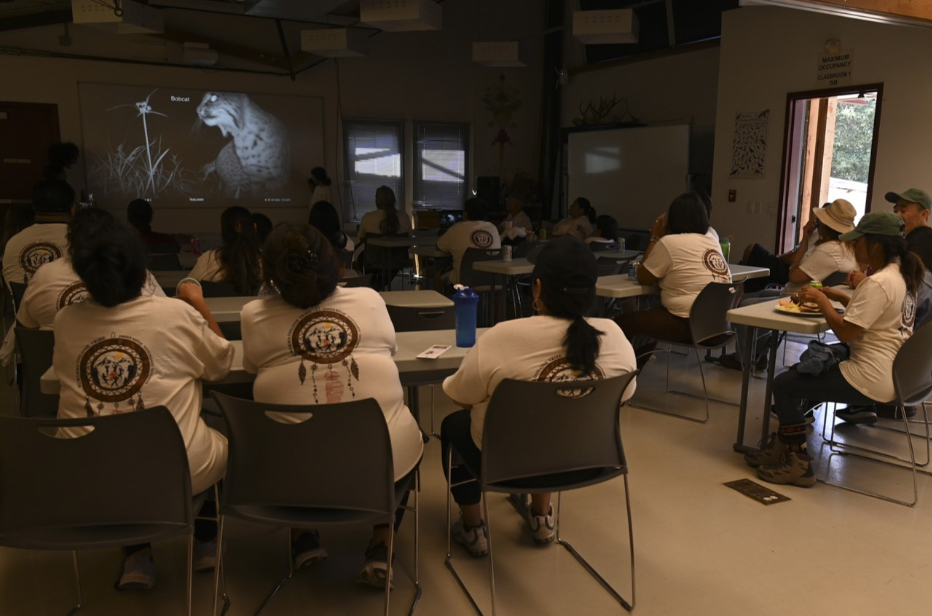
Muwekma youth members presenting their camera-trap findings. Photo by Marina Luccioni.
Video of mother mountain lion and cubs recorded by one of the camera traps.
Following this presentation, the group went outside to the picnic tables and met Alan Launer, Director of Stanford Conservation Planning.
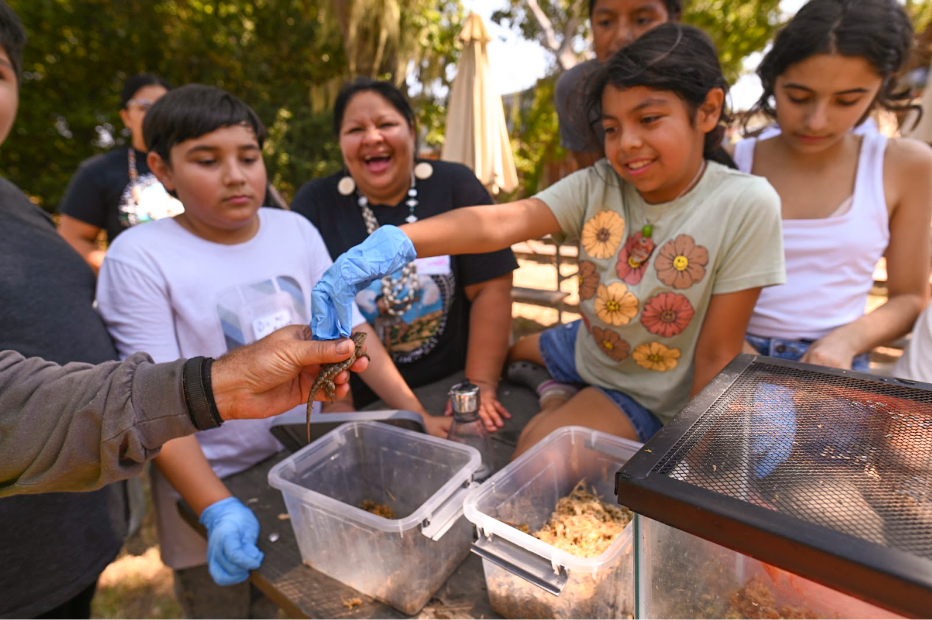
Muwekma youth members get close to a western fence lizard. Photo by Marina Luccioni.
We got to see, hold, and learn about reptiles and amphibians Alan had collected locally, including western fence lizards (Sceloporus occidentalis) and partay (toads and frogs) like California toads (Anaxyrus boreas halophilus) and Sierran chorus frogs (Pseudacris sierra).
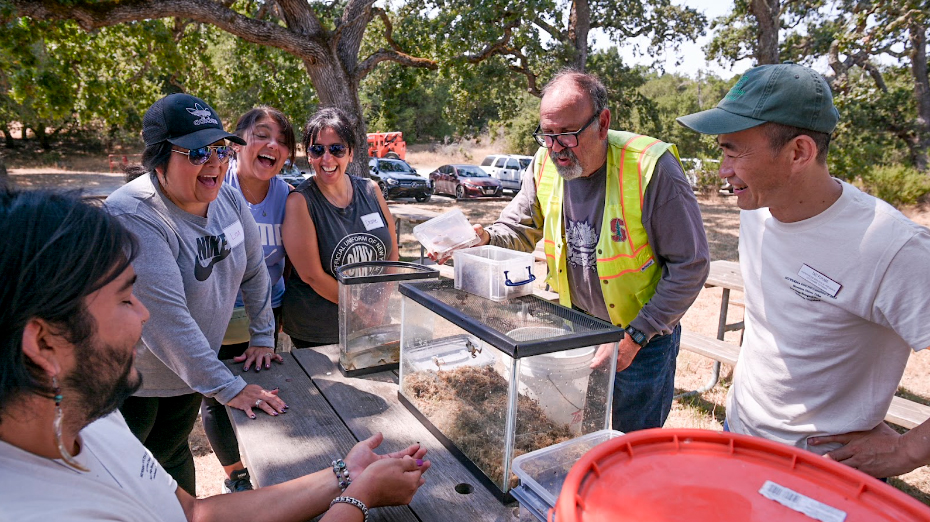
Tribal members Lisa Avila, Diane Leyba, and Michelle Martinez learn about California toads that Alan Launer had collected locally, with Stanford student Noah Macias and JRBP('O'O) Faculty Director Tad Fukami. Photo by Marina Luccioni.
Blessed with pleasant weather, we then went on a hike to Leonard’s bridge to explore and see some of the sites where youth members set up the camera traps.
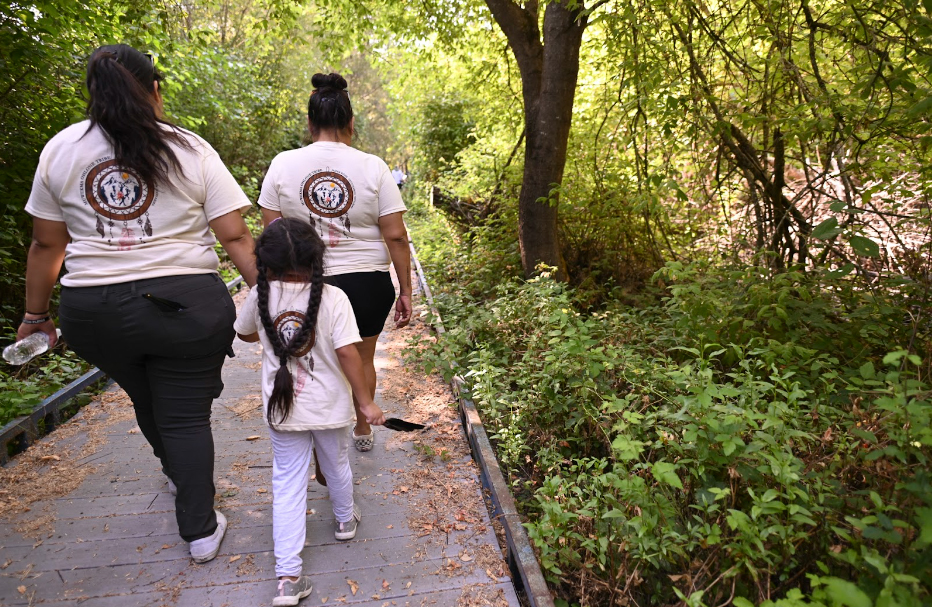
Going on a hike on Leonard’s bridge to explore and to look at the sites where the camera traps were set up. Photo by Marina Luccioni.
There was also a spontaneous beading class offered by tribal member Bernadette Quiroz and her son Maddox in the field station’s library, and both tribal members and Stanford affiliates were invited to join them to learn how to make earrings, necklaces, bracelets, etc.
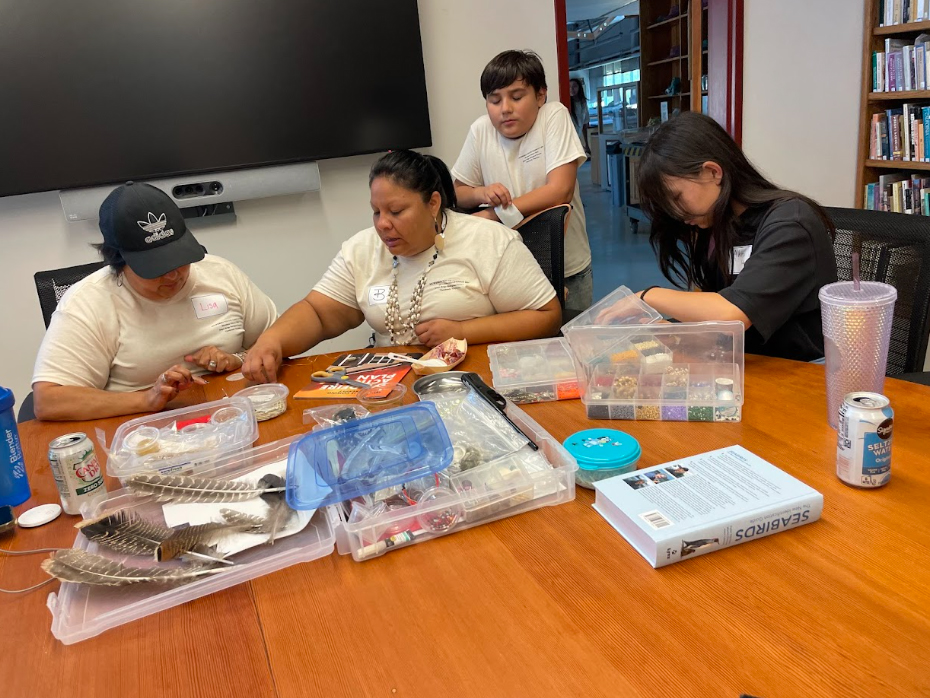
Tribal member Bernadette Quiroz and her son Maddox offered a beading class in the field station’s library. Photo by Tad Fukami.
After dinner, we went to the Muwekma Native plants garden near the Stanford Dish, a teaching space run by Mike Wilcox, Senior Lecturer of Comparative Studies of Race and Ethnicity.

Tribal member Yvonne Arellano and Stanford student volunteer Marty Freeland at dinner served by Rima Crow and her team. Photo by Marina Luccioni.
Once there, Mike told us about the garden and the Indigenous history of the Ohlone land. As the University Tribal Liaison with the President’s Office, Mike has worked hard to create and maintain a relationship between the tribe and Stanford. Through this work, he played a vital role in making the campout happen.
After listening to Mike, everyone then took part in removing the non-native stinkwort (Dittrichia graveolens) to clear the space.
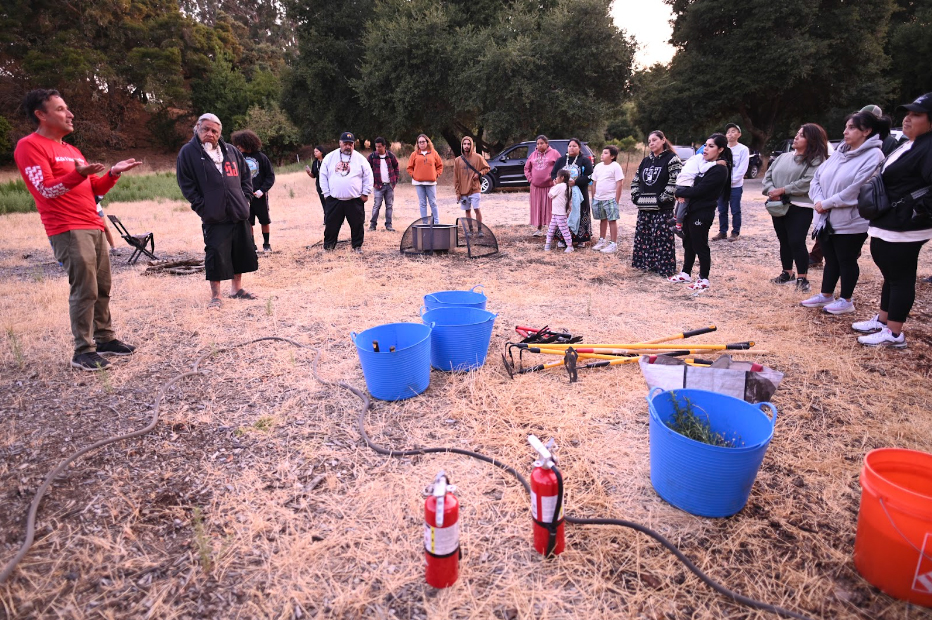
Mike Wilcox (far left) talks to Joey Torres (next to Mike) and other tribal members at the Muwekma Native plants garden on Stanford campus. Photo by Marina Luccioni.
Led by the Chairwoman and tribal member Joey Torres, a ceremony was held in the cleared space. It started with the presentation of gifts (handmade abalone pendants) from the Chairwoman as a symbol of partnership. Joey then conducted the ceremony where they thanked ancestors and gave prayers to their homeland with traditional songs and dances. Non-tribal participants were generously invited to be part of this ceremony.
Joey's contribution to keeping the tribe’s cultural traditions alive is inspiring, and it showed in how he guided the ceremony. Together with other tribal members, particularly elders, Joey has been dedicating himself to reviving the dances, creating the regalia, and imparting the tradition to the tribal youth.
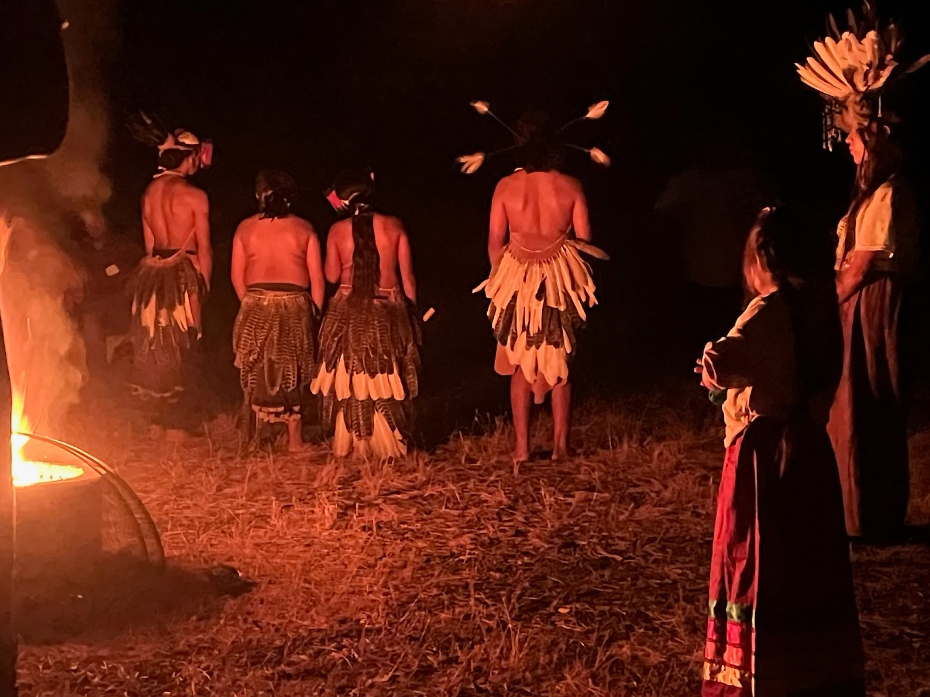
Tribal members ready to dance at the Muwekma Native plants garden. Photo by Richard Torres.
After enjoying marshmallows, we went back to JRBP('O'O) to sleep in camp tents.
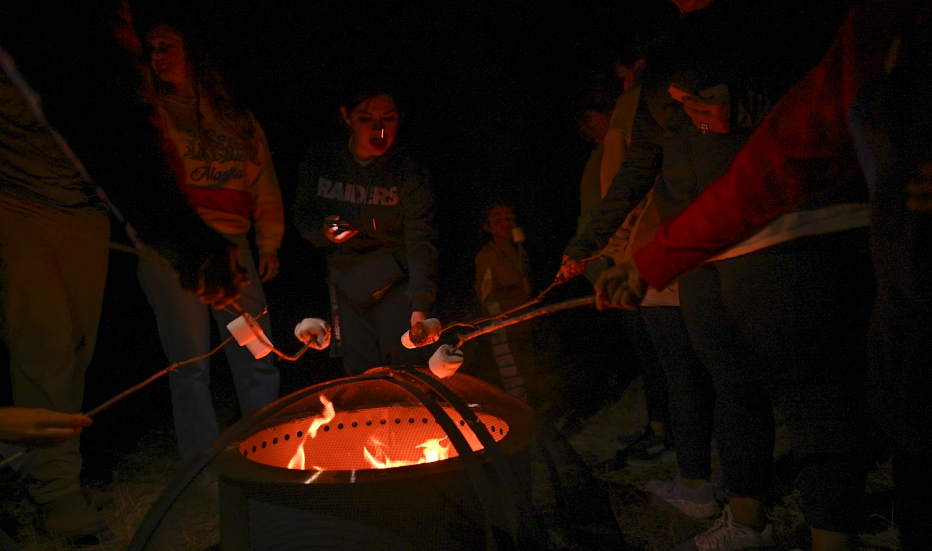
Enjoying marshmallows at the Muwekma Native plants garden. Photo by Marina Luccioni.
Day 2
In the morning of the second day, we went to see bird banding by Julian Tattoni, a Stanford alum (’20, Earth Systems) and a current PhD student at UC Davis, and Katie LaBarbera, the Landbird Program Science Director at San Francisco Bay Bird Observatory, both of whom collaborate with Stanford researchers on the SOAR project.
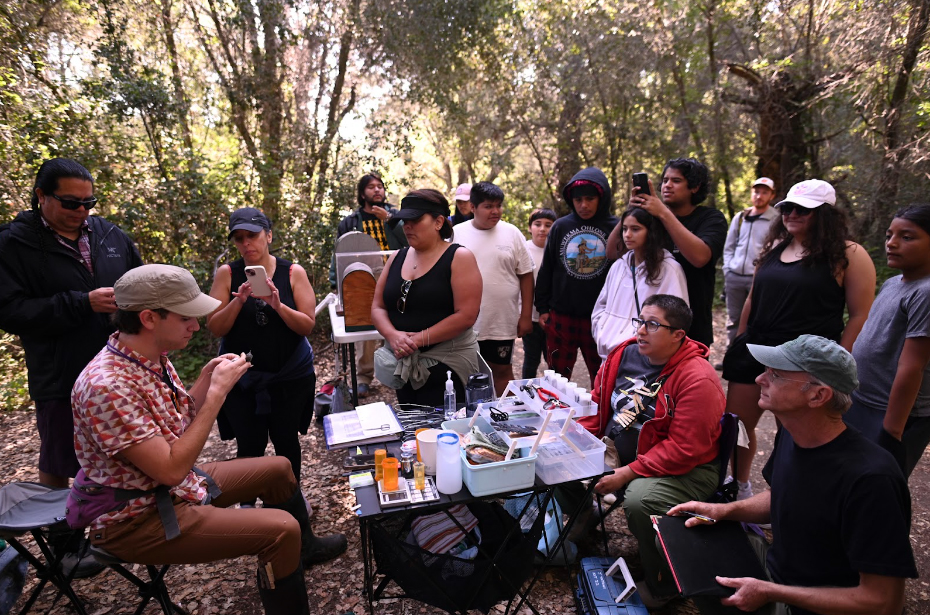
Tribal members seeing bird banding by Julian Tattoni and Katie LaBarbera. Photo by Marina Luccioni.
In addition to Julian and Katie, student volunteers were also there to talk with Muwekma youth about wirak or birds that were mist-netted, including Bewick’s wren (Thryomanes bewickii), common yellowthroat (Geothlypis trichas), orange-crowned warbler (Vermivora celata), dark-eyed junco (Junco hyemalis), song sparrow (Melospiza melodia), Swainson’s thrush (Catharus ustulatus), western flycatcher (Empidonax difficilis), Wilson’s warbler (Cardellina pusilla), and wrentit (Chamaea fasciata).

Tribal member Aria Cazares looking at a Swainson’s thrush as Julian Tattoni shows how to band a bird. Photo by Marina Luccioni.
Another activity in the morning was a hike to the grinding rock near Rattlesnake Rock. Laura Jones, Stanford Director of Heritage Services and University Archeologist, led the group and told us about Ohlone villages that existed in and around the area currently known as JRBP('O'O). Laura also shared her story of working with the tribe, including the previous chairwoman Rosemary Cambra, over the past several decades.
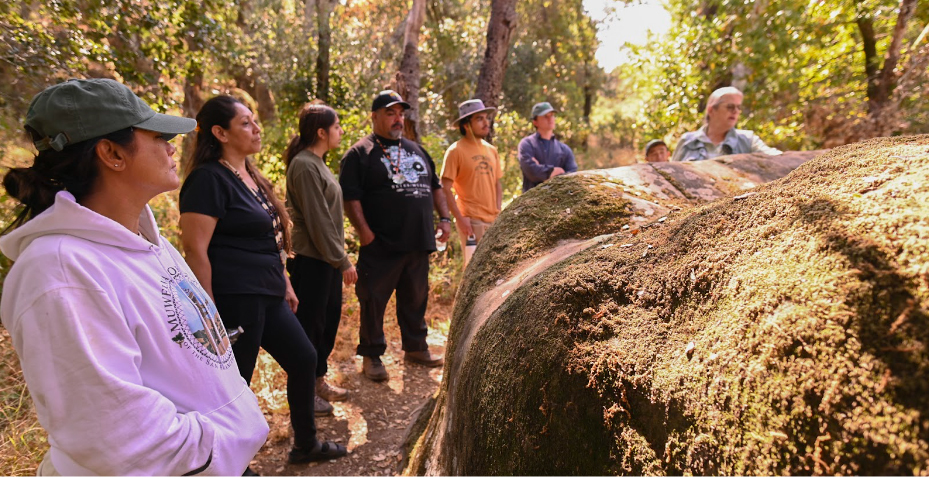
Chairwoman Nijmeh (far left), other tribal members, and Stanford students visit a grinding rock and other cultural sites with Laura Jones (far right). Photo by Marina Luccioni.
We then went to the O'Donohue Family Stanford Educational Farm. The farm director Patrick Archie and his team served us lunch made of vegetables grown on the farm. We also saw the Muwekma Four Directions garden located in the farm. This garden is a project that started two summers ago when tribal members came to plant native plants, with a focus on those of cultural significance, such as miriyan or sage (Salvia apiana). Tribal members got to harvest these plants.

Tribal member Bernadette Quiroz with white sage leaves harvested at the Muwekma Four Directions garden. Photo by Marina Luccioni.
In addition, we planted more native plants with Patrick’s help, such as apio or blue elderberry (Sambucus nigra ssp. caerulea), maarax or white alder (Alnus rhombifolia), tuhhe or black oak (Quercus kelloggii), sokoote or California bay (Umbellularia californica), tummay or cow parsnip (Heracleum maximum), tuyuk or toyon (Heteromeles arbutifolia), and more. This planting marked the end of the campout.
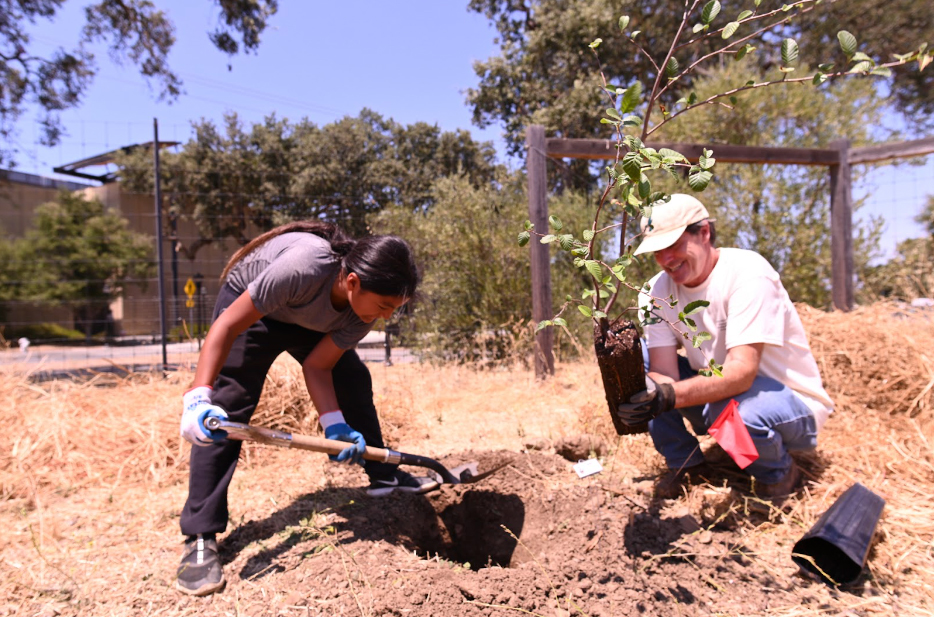
At the Muwekma Four Directions garden, tribal youth member Izekiel Dominguez plants tapio or blue elderberry with Patrick Archie. Photo by Marina Luccioni.
The first of many
JRBP('O'O) staff was heartened by the strong interest expressed by the chairwoman and other tribal members in making this campout at 'Ootchamin 'Ooyakma an annual event. This interest is shared by the JRBP('O'O) staff team and the Stanford students, staff, and faculty who came to help. We see great potential for this campout to continue to be a truly collaborative, mutually beneficial effort. We have already started planning for the next iteration in collaboration with the tribe.

Tribal members, Stanford student volunteers, and JRBP('O'O), Educational Farm, and other staff and faculty gather at the closing of the campout. Photo by Marina Luccioni.
We would like to thank Chairwoman Nijmeh and all tribal members who came to participate in the campout. We are also grateful to Stanford colleagues, including Patrick Archie, Laura Jones, Alan Launer, and Mike Wilcox, for their collaboration. The campout would not have been possible without the hard work and genuine interest of the Stanford undergraduate students (Marty Freeland, John Lowndes, Noah Macias, and Nick Rodriguez) and PhD students (Marina Luccioni and Ethan VanValkenburg) who worked as volunteers. Finally, Julian Tattoni and Katie LeBarbera, as well as the Stanford students who also interacted with campout participants at the bird banding station (Alex Mondragon and Maya Xu), made a significant contribution to the campout as well. Thank you all.
By Tadashi Fukami
Top of page: Participants gather behind Leslie Shao-ming Sun Field Station at the beginning of the campout. Photo by Marina Luccioni.



